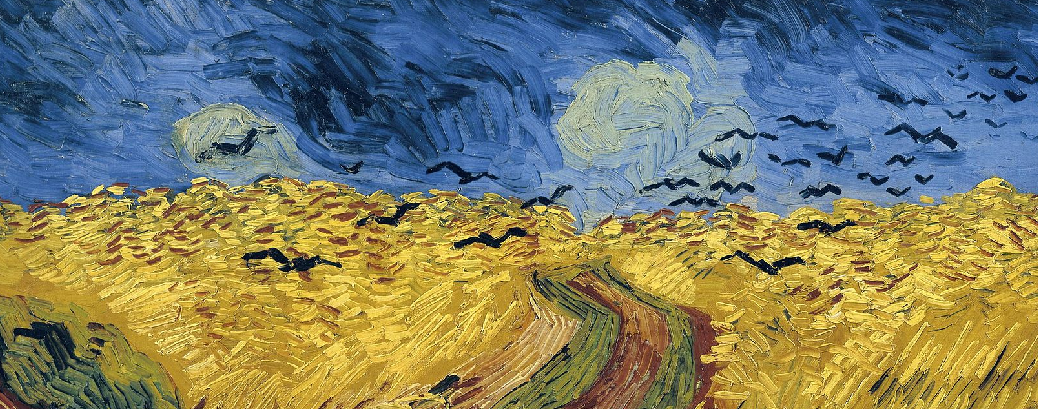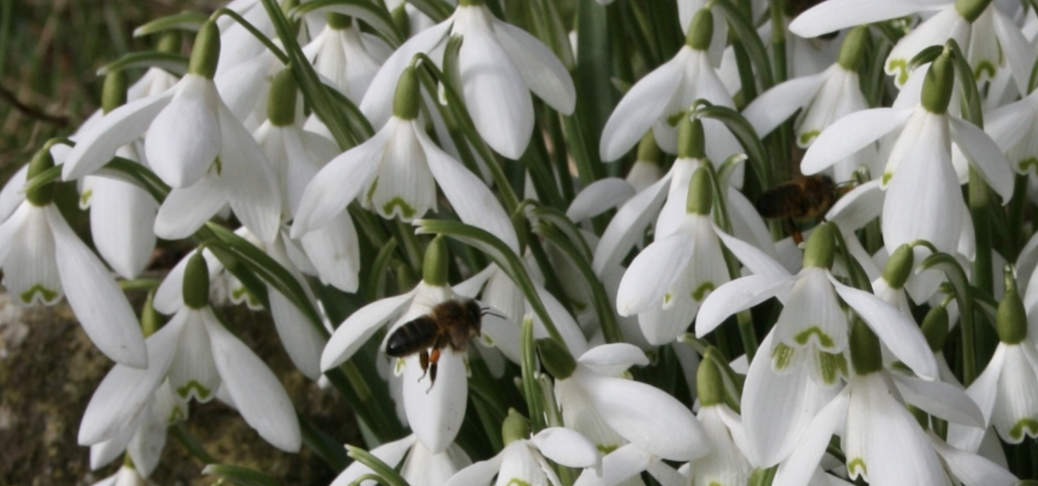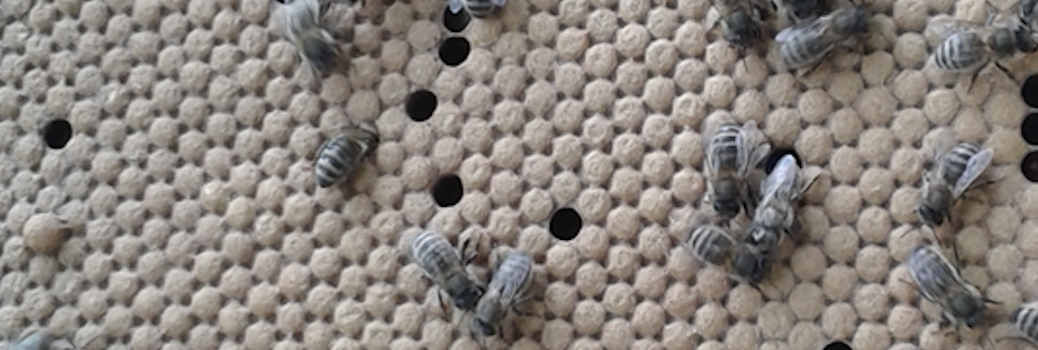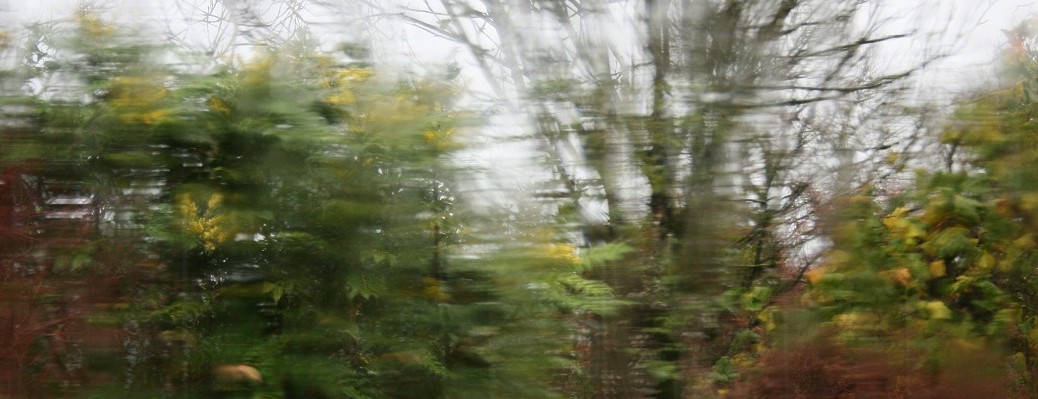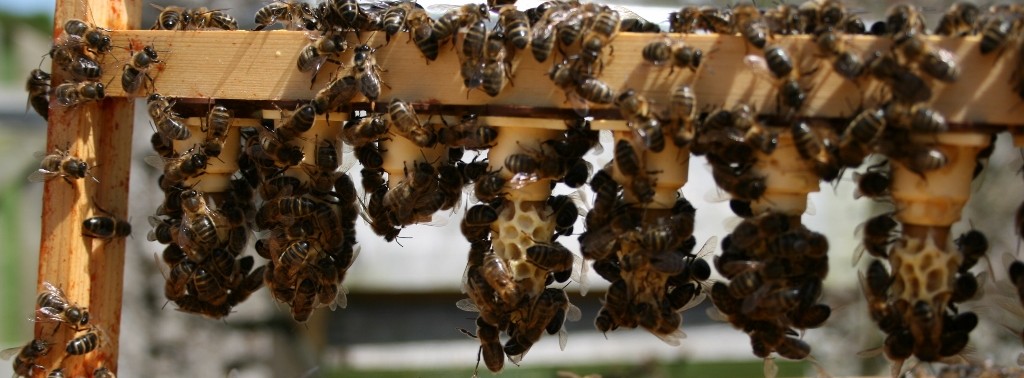The picture above is by Vincent Van Gogh (obviously says you), it lives in the Van Gogh Museum, Amsterdam and is called ‘Wheatfield with Crows’. It was painted in 1890 – possibly his last picture. Vincent didn’t know about climate change or intensive agriculture; if he had, he would probably have cut the other ear off and left the crows out. Continue reading Ireland Pollinator Plan 2015-2020
Category Archives: Native Bee
Pollination and Honey Bees
So, why are honey bees such important pollinators?
From an ecological point of view there are at least 3 reasons:
- Honeybees have evolved in tandem with certain flowers and they have adapted to facilitate each other;
- One bee is able to rapidly communicate the location of a pollen/nectar source to the whole hive and an army sets out;
- The bees then concentrate faithfully on that flower species until the pollen runs out or the nectar dries up, at which point the job of pollination is accomplished.
These features obviously make the honey bee important from an agricultural/commercial point of view. In addition, hives of bees are mobile and can be moved from crop to crop – an arrangement which can suit bees, farmers and beekeepers so long as everyone has a bit of respect. Wouldn’t that be great?
But some detail: Continue reading Pollination and Honey Bees
White Eyed Worker Bee
White eyed drones are victims of a their genes. As we know, drones come from unfertilised eggs and as such they have only one set of chromosomes so all their genetic defects or mutations are expressed and some of them are out there for all to see – like white eyes. Continue reading White Eyed Worker Bee
Remote hive monitoring in action
Installing a remote hive monitoring system should give the armchair beekeeper some measure of comfort – especially in a cold spring when opening hives is out of the question. However, it ain’t necessarily so! Continue reading Remote hive monitoring in action
Remote Bee Hive Monitoring
Honey Bees and Climate Change
Are you the sort of person that stares out at the sheeting rain and thinks ‘Global warming – ha!’
Well the globe is certainly heating up, but not here at the wet end of Europe so forget long sunny days and a grape vine in the garden; for us, climate change means the same old stuff – wind and rain – but more of it.
But how will climate change affect our bees? Continue reading Honey Bees and Climate Change
Skep Beekeeping
Skep beehives of increasing complexity were in common use all the way up until the beginning of the 20th century when wooden hives, designed around the bee-space discoveries of Rev. Langstroth in 1851 and with all the advantages of removable frames finally tipped the balance in favour of new technology.
Click here for more on Rev. Langstroth and the discovery of the beespace
However, the skep was reluctant to go and the records of the Cumberland and Westmorland Beekeepers’ Association for 1906 show that 25% of colonies were still housed in skep hives.
Wintering Skeps
Queen Bee Introduction – Basics
Replacing a queen bee can be a tricky operation but forewarned is forearmed. To maximise success you need to think carefully about about your Target Colony and the State of your Queen. Read on… Continue reading Queen Bee Introduction – Basics
Queen Bee Introduction – Postal Cage
Introducing a new queen bee can be ticklish enough – especially if she has spent a few days in the post and has gone off lay as a result. Here’s the best way to introduce a queen that’s been in the post. Continue reading Queen Bee Introduction – Postal Cage
How to Breed Varroa Resistant Bees
It is well known that some colonies of bees have traits such as grooming or hygienic behaviour which make them better able to cope with Varroa. Pinpointing such colonies with the aim of selectively breeding from them can be a challenge. There are several different methods and they range from the meticulous to the downright ruthless. Continue reading How to Breed Varroa Resistant Bees
